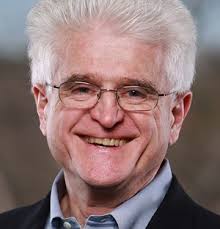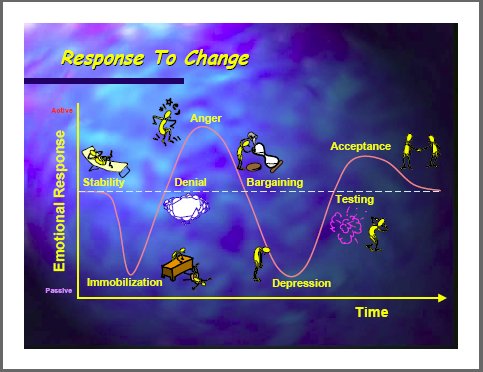|
Daryl ConnerManaging at the speed of changeThe dos and don't of ongoing turbulence
"Why?"
People will resist change, and that resistance will be articulated as "why?"
In "Managing at the Speed of Change" Conner suggests that senior management need to prepare very thorough answers to the following questions:
- What's wrong with the way we've been doing things?
Perpetual change
Daryl Conner suggests that as we now live in an era of perpetual change and disturbance, we need to expect more change: "we need to stop assuming we are one project away from things settling down." He says that we focus an inordinate amount of time and energy into trying to make people feel comfortable during a major change - where as the reality is they won’t – dramatic change is uncomfortable.
The leader’s role in change is not to make people feel happy about the change: it’s helping them succeed despite their discomfort. It is not necessary for people to like what has happened to them – it is necessary that they make the adjustments that will help them succeed in the new environment.
Staying within tolerance levels and increasing resilienceConnor suggests that organisational leaders need to manage the amount of change that their people experience and to keep it within the tolerance levels that they can handle. The priority should be given to change initiatives projects that are business critical and the rest should be put on hold. Leaders should manage the process carefully and in so doing increase their people's capacity to engage with future change. Organisations that succeed are better able to handle the next change that they face. Connor also places emphasis on the need for change leaders to recognise and address the cycle of emotions - or the transition as William Bridges refer to it - that people will pass through. This is akin to the Kubler Ross grief cycle. Once the pattern of change has been mastered then the focus of change leaders changes to developing resilience with their people. As Connor says:
"...by approaching change in a disciplined manner, we can become architects of our future."
Daryl Conner's ResourcesConner and his team are committed to building their methodology on a strong foundation of research. They've been doing it for more than thirty-five years, and it continues to be a critical element of their approach. Resources available: Daryl Conner on the Essence of the Art of Change Facilitation
Back to Change management theories
Home page
|


 Daryl Conner starts with the question:
Daryl Conner starts with the question:

 The
The



